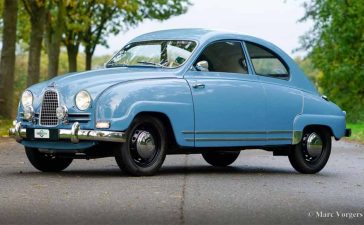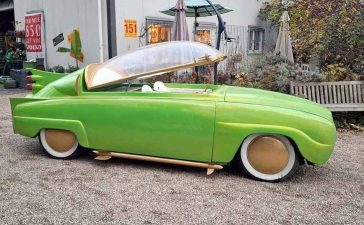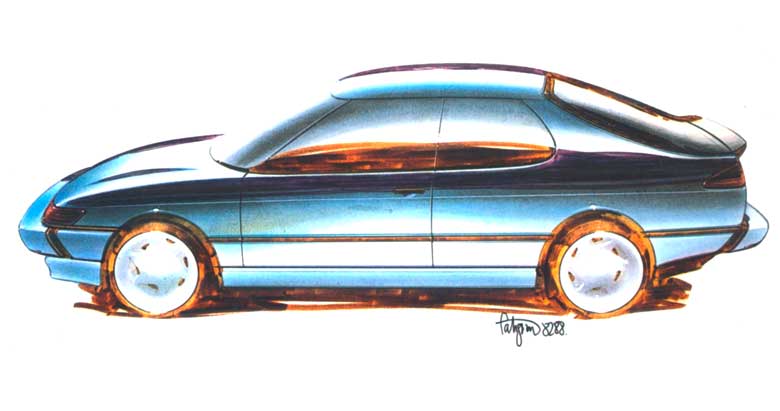When it comes to powerful and versatile station wagons, the Volvo V70 R and Saab 9-3 Turbo X stand out as top contenders, combining practicality with thrilling performance. These two Swedish icons deliver not only practicality but also raw power, making them favorites among those who appreciate both family-friendly space and thrilling drives.
Enthusiasts’ take on Swedish powerhouses
In the YouTube video featuring these two super stations, the hosts highlight how the Dutch are obsessed with station wagons and even more so with powerful cars. One of the presenters praises the Volvo V70 R’s iconic five-cylinder engine, lamenting that it isn’t available in the distinctive Flash Green paint but appreciating its manual transmission.
In contrast, the other presenter opts for the automatic Saab 9-3 Turbo X, noting that while it lacks the 300 hp of the Volvo, it offers a more advanced all-wheel-drive system and extra torque thanks to modifications. “This one’s been tweaked to 315 hp by a Dutch enthusiast,” one of the hosts explains, adding that this makes the Saab the more powerful of the two.
Under the hood – Comparing power and specs
The Volvo V70 R is no slouch, with a 2.5-liter five-cylinder engine that produces 300 hp and 400 Nm of torque, sent to all four wheels through an adaptive suspension system. As the video points out, the manual version is a must-have for those who truly want to experience the V70 R’s full potential. The presenters agree: “The automatic dulls the sharp edge of the five-cylinder,” making the manual a more desirable option for enthusiasts.
The Saab 9-3 Turbo X counters with a 2.8-liter V6 turbo, generating 315 hp after some tweaks by its owner. The hosts discuss how the Saab’s engine sound is “like a giant hair dryer blowing air into the engine,” delivering a visceral driving experience, especially when combined with its aggressive tuning by Hirsch. “It’s seriously quick,” one presenter remarks, acknowledging the power boost compared to the Volvo.
Driving dynamics – A tale of two super stations
Both cars offer unique driving experiences. The Volvo’s adaptive dampers allow it to switch between comfort and sport settings, making it more versatile. “In Comfort mode, it’s your typical soft Volvo,” they note, but when switched to Sport or Advance mode, the suspension tightens up for more spirited driving. The Saab, on the other hand, offers a more raw, direct ride. The hosts point out that while the Turbo X’s handling isn’t as sharp as expected, its unique all-wheel-drive system allows up to 80% of torque to be sent to a single rear wheel, enhancing cornering performance in tricky conditions like icy roads.

However, they also highlight the drawbacks of both cars. The Saab’s stiff ride is a constant, with no adaptive suspension to adjust for comfort, and the presenter concedes, “The Turbo X isn’t the most comfortable car, especially with the Hirsch springs.”
Interior and design – A clash of style
Inside, the Volvo V70 R impresses with its clean, luxurious design. The presenters are particularly fond of the orange leather seats, which contrast beautifully with the otherwise understated cabin. They note that while it’s not the flashiest interior, it’s undeniably well-built, with the comfort levels expected from a Volvo.
By comparison, the Saab 9-3 Turbo X’s interior is a bit more utilitarian, with one host saying that it feels more like a General Motors product than a true Saab. The carbon fiber accents and Turbo X badge provide some sporty flair, but the overall design lacks the refinement of its predecessor, the Saab 900. “It’s not as puristic,” the host laments, acknowledging that some Saab purists might be disappointed by the more GM-influenced design.
Verdict – Which Swedish icon takes the crown?
Both the Volvo V70 R and Saab 9-3 Turbo X offer something unique to the performance wagon enthusiast. The Volvo excels with its refined handling, luxury, and adaptive suspension, making it a great choice for those who want both a comfortable daily driver and a spirited weekend machine. The Saab 9-3 Turbo X, on the other hand, appeals to those who prioritize raw power and exclusivity, with its limited production run of just 2,000 units worldwide and its untamed driving dynamics.
As one host concludes, “If I had to choose, I’d still go with the Volvo for its looks, that five-cylinder engine, and the manual gearbox,” while the other admits, “The Saab has that little bit more character, but it’s a rare gem, and finding a well-preserved one is a challenge.”
As Saab enthusiasts, though, we can’t help but give our nod to the Turbo X. Its rarity, heritage, and unique charm make it more than just a car—it’s a statement of character and individuality. For us, Saab will always have the edge in capturing the spirit of true automotive passion.
For more insights and to watch these two Swedish powerhouses in action, check out the full video and read the detailed review on Autovisie Magazine here.
More Saab vs. Volvo matchups
If the Turbo X SportCombi vs. Volvo V70 R showdown got your attention, you’ll want to see how these two brands clashed in the executive sedan arena.
In 2011, Auto Zeitung put the all-new Saab 9-5 NG up against the established Volvo S80 in a head-to-head test. More than a decade later, the verdict still shapes used-car buying decisions for fans of both marques.
Read the full Saab 9-5 NG vs. Volvo S80 story →












Put a Volvo V40 against the 9-3 Sportwagon and then you’ll have a fair fight.
sry, but Holdens V6 (in Saab Aero X) is better in almost everything than unreliable last Volvos I5.
Sorry mate, but the Holden is far advanced than I5 even with the v10 racing genes.Technicaly the V6 Holden is detuned for Saab and still has the kick.No offense but the entire package from SAAB is. much better than Volvo.That is my opinion based on experience and maybe You know better the Volvo but still I stuck with Saab.
That v6 in nothing good with. One of the worst Saab engine.
again, say you don’t know shit about Volvo’s engines without saying you don’t know shit about Volvo’s engines. It’s absolutely not better. Those i5s run for 250k-500k miles EASY. I have yet to see a Saab with that many miles. You clearly have no idea what you’re talking about, like not even in the slightest and every time you comment it makes that more apparent
well my old 93 9000 Aero is at 3rd clutch at 680K in Arizona.And when that car was launched half of 911 and M3 switched on that.Probably I don’t know your s—-t but I have my time around cars and not like a junk yard mechanic.Let’s be civil and agree to disagree, there are pro and con for both cars and we have to respect that.Like I said the heritage of that 5cylinder power pack has a V10 genes lay out unfortunately lubrication system and lack of numatic system created a lot of problems.Bt I have to respect your opinion regardless you know S—-T about Saab!
a 93 uses completely different engines. So again you have no idea what you’re talking about. You’re comparing apples to oranges and thinking it gives you a clue when it’s obvious it doesn’t
well you are right about that,but when you stated that Volvo engine runs for 2-300 k I gave you my 9000 example, and in a way you are right, thanks to GM the V6 2.8 is Holden Australia engine.Fortunately was a great engine versus lousy V6 3.0 asymmetric turbo taken from GM. Like I said the Geely let Volvo to do their way not like the GM the gene of the 5cylinders are based on a great Ford racing engine.I appreciate your inputs ,but showing respect to others is a art! Wish you more wisdom!
The Saab is a higher performing vehicle in basically every way. Faster acceleration, higher top speed, better handling..
Brother has a V70R, and my FWD Aero 2.8 was significantly faster let alone an AWD TX with much more power.
Having owned both Volvos and Saabs of this vintage, I’d say they’re equal…in headaches, heartaches and endless maintenance. I love them both, but I’ll take a Saab 9-3 aero with FWD…unless someone can find me a low mileage 850r manual wagon in green
I previously owned a Volvo 850 sedan and now own a Saab 9-3 wagon. The Saab is much more enjoyable to drive. The Volvo was a fine car but felt very much like the tank that it was; the Saab feels more nimble and responsive, and the seats are more supportive. The Volvo seats are comfortable for a quick trip in town, but they’re not supportive enough for long distance comfort.
The stock Saab stereo sucks, though; the Volvo had a comparatively fantastic factory system.
yep, I’ll admit I would probably be in less of a perpetual state of fixing if I left it to the professionals, but where’s the fun in that! I’m not complaining about the time spent tinkering. I’ve had old Benzes and Toyotas even that required more TLC, but I’m still chasing waterfalls. 😂
forgot to add, 9000 Aeros are beyond cool! As a guy born in 95 I’ve always wanted to add a car from my birth year to the stable. I’m not saying I’m searching classifieds, but don’t check my browser history…
believe the Saab 9-3 was a modified Opel vectors, if this is the case it will for sure be a maintenance headache. As for the volvo, having owned 4 Volvos, I am surprised, with the exception of a 2011 T4 engine issues (ford block), they were all very reliable.
Had both and hard to separate them. Each amazing. Wish I kept both